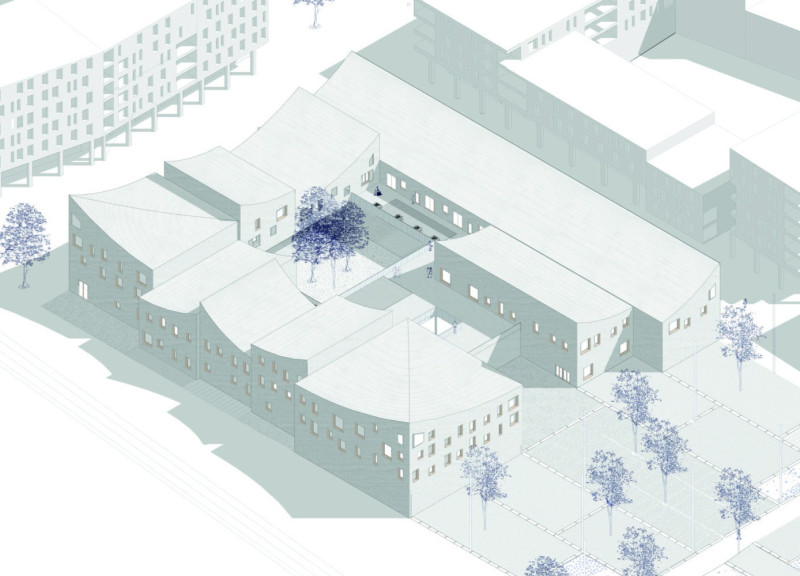5 key facts about this project
At the core of the project lies a commitment to sustainability and innovation. The architectural design incorporates elements that promote energy efficiency, such as strategic positioning to maximize natural light and ventilation. The use of passive solar principles not only reduces energy consumption but also enhances the overall comfort of the users. Unique architectural features, such as green roofs and rainwater harvesting systems, further manifest the project's commitment to ecological responsibility. These elements exemplify a modern approach to architecture that prioritizes environmental stewardship alongside aesthetic considerations.
The project also emphasizes adaptability and social interaction. Its design includes flexible spaces that can be repurposed for various community functions, catering to diverse groups and activities. This adaptability is further reflected in the open layout, which encourages movement and interaction, fostering a sense of community among users. The incorporation of public pathways and gathering spaces created through thoughtful landscaping enhances the experience of the site, making it an inviting environment for visitors and residents alike.
Material selection plays a significant role in the project, contributing to both the aesthetic and functional goals. The use of locally sourced materials not only reduces the carbon footprint associated with transportation but also creates a sense of place that resonates with the local culture and heritage. Textures and colors are carefully chosen to reflect the natural environment, promoting harmony between the building and its surroundings. Materials such as concrete, steel, and wood are employed in innovative ways, showcasing their versatility while ensuring durability and ease of maintenance.
Architectural details throughout the project further underscore its unique design approach. The intricate use of fenestration allows for an engaging interplay of light and shadow, enhancing the visual dynamics of the façade. Modern glazing techniques ensure thermal performance while providing unobstructed views of the landscape. The combination of open spaces with intimate nooks invites exploration and offers varying experiences within the structure.
The project stands as a testament to the potential of architecture to shape human experiences and interactions. By addressing contemporary challenges through practical yet aesthetically pleasing solutions, it illustrates how design can enhance everyday life. This is not merely a space for activities but a catalyst for community engagement and environmental awareness.
For those seeking a deeper understanding of this architectural endeavor, exploring the architectural plans, sections, and designs will provide further insight into its innovative features and thoughtful planning. The project invites you to discover its many layers and appreciate the careful consideration that has gone into its creation.


























